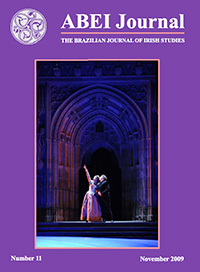Translating James Joyce’s Dubliners: Confronting Literalness and Revision
DOI:
https://doi.org/10.37389/abei.v11i0.3649Keywords:
James Joyce, Dubliners, Translation, Portuguese.Abstract
This short paper addresses the issues of literalness and revisión in literary translation. The case in point is my own translation of James Joyce’s
Dubliners into Brazilian Portuguese, published in Brazil in the early 1990s.
Downloads
Published
2009-06-17
Issue
Section
Fiction
How to Cite
O'Shea, J. R. (2009). Translating James Joyce’s Dubliners: Confronting Literalness and Revision. ABEI Journal, 11, 73-76. https://doi.org/10.37389/abei.v11i0.3649


